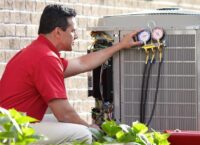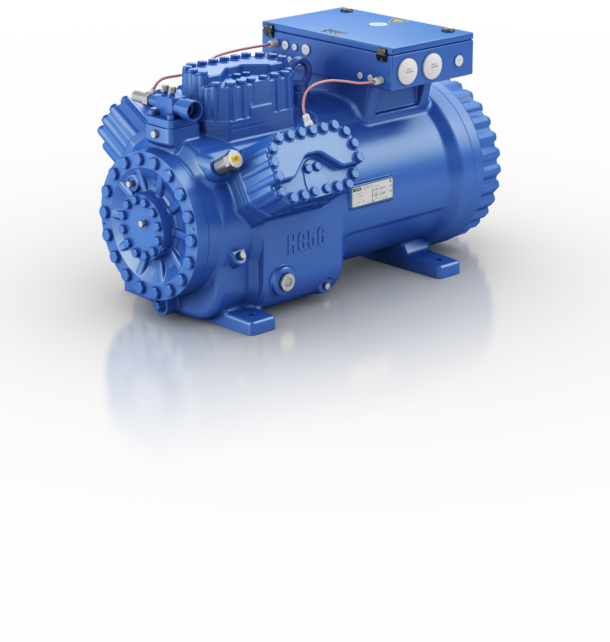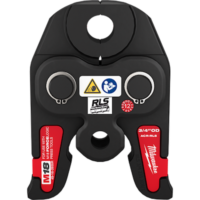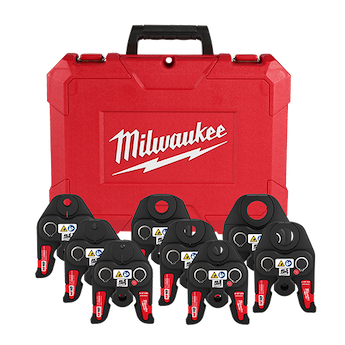Plumbers looking to branch out into the field of HVAC maintenance and installation need to learn specialized skills that go beyond piping and fixtures. From mastering refrigeration systems to understanding airflow dynamics, each competency will build your ability to handle heating, cooling, and ventilation challenges confidently. So, here are five essential skills that every plumber Read more
refrigeration systems

Plumbers looking to branch out into the field of HVAC maintenance and installation need to learn specialized skills that go beyond piping and fixtures.
From mastering refrigeration systems to understanding airflow dynamics, each competency will build your ability to handle heating, cooling, and ventilation challenges confidently.
So, here are five essential skills that every plumber needs for a successful HVAC career.

1. Refrigeration System Knowledge
Understanding refrigeration systems (which you can learn at specialist educational establishments like The Refrigeration School) is foundational for HVAC work.
This involves knowing how refrigerants cycle through compressors, evaporators, and condensers to create cooling effects.
You also need to grasp pressure-temperature relationships in these systems, as they’re crucial for diagnosing performance issues or leaks.
Recognizing the components of different system types – split units or packaged systems – can help you install or maintain them efficiently.
A clear knowledge base lets you troubleshoot problems accurately and ensures compliance with regulations like safe refrigerant handling standards.
2. Electrical Troubleshooting Skills
HVAC systems rely heavily on electrical components. Knowing how to test circuits, locate faulty wiring, and handle control boards is critical for maintenance or repair.
Being familiar with reading schematics and using tools like multimeters can save time when diagnosing issues in thermostats, relays, or compressors.
Also, safety is key here. So, understanding voltage ratings and proper handling is crucial for preventing accidents during troubleshooting.
A strong grasp of these skills not only resolves system problems efficiently but also builds confidence in working around complex electrical setups.
3. Thermodynamics Understanding
Knowing how heat transfers, airflow moves, and energy exchanges are critical for designing efficient systems. After all, HVAC systems revolve around the principles of thermodynamics.
Understanding concepts like heat gain or loss helps you size equipment accurately.
Comprehending phase changes in refrigerants ensures better diagnostics during cooling failures.
This knowledge connects directly to practical work – like optimizing heating efficiency or troubleshooting uneven cooling zones.
By mastering thermodynamics basics, you can provide solutions that improve comfort while minimizing energy waste in homes and businesses alike.
4. Airflow and Ventilation Basics
Proper airflow is the backbone of HVAC performance. Without balanced ventilation, systems struggle to maintain consistent temperatures or manage air quality.
Recognizing how ductwork layout affects circulation helps you identify pressure imbalances or blockages. You’ll also need to measure airflow rates with tools like anemometers to ensure they meet system specifications.
Understanding ventilation basics aids in improving efficiency, controlling humidity levels, and addressing issues like uneven heating or cooling.
Strong expertise in this area ensures systems run smoothly while maximizing occupant comfort.
5. HVAC Diagnostic Techniques
Lastly, troubleshooting HVAC issues requires sharp diagnostic skills.
Systems can fail for many reasons, from refrigerant leaks to faulty sensors or airflow blockages.
A systematic approach helps narrow down the cause.
Using tools like pressure gauges, leak detectors, and infrared thermometers speeds up problem identification.
Knowing how to interpret error codes on modern systems also saves time during repairs.
Strong diagnostics ensure you fix problems accurately the first time, preventing repeat visits and building trust with clients through reliable service.

Danfoss will highlight its latest innovations and broad portfolio of solutions for the HVAC/R industry at the annual AHR Expo, February 10-12 in Orlando, Fla. At booth #1301, visitors can discover how Danfoss can help their customers reach decarbonization goals under the theme, “Transition Forward.” With an expected 50,000 attendees and 1,800 exhibitors, the premier Read more
Danfoss will highlight its latest innovations and broad portfolio of solutions for the HVAC/R industry at the annual AHR Expo, February 10-12 in Orlando, Fla. At booth #1301, visitors can discover how Danfoss can help their customers reach decarbonization goals under the theme, “Transition Forward.” With an expected 50,000 attendees and 1,800 exhibitors, the premier annual event for the HVAC/R industry provides an invaluable opportunity to showcase the company’s technologies that enable customers to build heat pumps, data centers, rooftop units, Dedicated Outdoor Air Systems (DOAS), chillers and refrigeration systems that reduce carbon emissions and energy consumption.
Reflecting the growing push toward decarbonization and Danfoss’ ESG goal of becoming their customers’ preferred partner to help meet their decarbonization goals, Danfoss HVAC/R solutions offer sustainable solutions to end users looking to reduce their carbon footprint along with their energy and maintenance expenses.

The BOCK HGX56 CO2 T compressor, VZH-VI variable speed scroll compressor with injection, and EKE110 controller will be on display at the Danfoss booth, #1301, at AHR Expo.
On display will be the newest technologies, including:
- VZH VI variable speed compressor range with injection
- The latest Turbocor® oil-free and magnetic bearing compressors
- Danfoss’ CO2 solutions for food retail
- X-Gate gateway solution for integrating multiple devices into building management systems
- The Danfoss Advanced Active Filter AAF 007, now expanded to 100/150A module, for higher efficiency in harmonics
- MyDrive® Harmonics software solution for mitigating harmonic distortions in HVAC systems
- EHW194 hose for data center cooling systems
Also on display will be the new BOCK HGX56 CO2 T compressor, winner of the Expo’s Innovation Award in the Refrigeration category. The latest Danfoss innovation for sustainable refrigeration, the HGX56 CO2 T is a transcritical semi-hermetic CO2 (R744) compressor, ideal for industrial refrigeration, cold storage, ice sports facilities and heat pumps, including process and district heating applications. The expansion to 6-cylinder capacity allows for a wider spread and faster uptake of large CO2 heat pumps and industrial refrigeration systems, along with lower system complexity and investment costs. As an award category winner, the HGX56 CO2 T compressor is a finalist for Product of the Year, which will be announced at the Expo.
Visitors to the Danfoss booth will also be able to see demonstrations of Alsense and Alsmart HVAC/R automation solutions, the VLT® HVAC FC 102 Drive NEMA 4X, condition-based monitoring (CBM), TurbocorCloud® software, and more.
AHR Expo will mark the start of the celebration of the 30th anniversary of Danfoss Turbocor. Founded in 1995 in Australia by a group of engineers and later acquired by Danfoss as a wholly owned company, the pioneer in oil-free compressor technology has grown to 350 employees with operation centers in the U.S., Denmark and China. Over 140,000 Turbocor compressors have been installed globally as more customers seek to lower their carbon emissions and energy consumption.
“Danfoss is set to showcase its cutting-edge innovations in decarbonization and energy efficiency at the AHR Expo,” said Vikas Anand, vice president of sales for North America at Danfoss Climate Solutions. “Our primary focus is to support our customers on their decarbonization journey and transition to low-GWP refrigerants. Expo attendees will have the opportunity to explore our extensive range of HVAC/R solutions that are driving the industry toward a more sustainable & energy efficient future.”
“At Danfoss, we are committed to providing reliable and innovative solutions that address current challenges and future opportunities,” said Hannes Leichtfried, vice president of sales and marketing for North America at Danfoss Drives. “Our U.S.-based production ensures localized support and high-quality products that maximize energy efficiency and decarbonization. This local presence, combined with our global expertise, helps our customers achieve their sustainability goals while navigating market complexities.”

RLS LLC, manufacturer of the Rapid Locking System line of flame-free press-to-connect fittings for HVAC and refrigeration systems, announces that Milwaukee® Tool, in partnership with RLS, has introduced RLS-compatible jaws for use with its popular M18™ FORCE LOGIC™ Press Tools. Available in sizes from 1/4″ – 1-3/8″, these new RLS ACR Press Jaws will allow Read more
RLS LLC, manufacturer of the Rapid Locking System line of flame-free press-to-connect fittings for HVAC and refrigeration systems, announces that Milwaukee® Tool, in partnership with RLS, has introduced RLS-compatible jaws for use with its popular M18™ FORCE LOGIC™ Press Tools.
Available in sizes from 1/4″ – 1-3/8″, these new RLS ACR Press Jaws will allow M18 tool users to take advantage of the time-saving and safety benefits of flame-free RLS press connections for HVAC/R, without needing to invest in a new press tool. These are the industry’s first jaws approved to press RLS fittings using 32 kN (kilonewton) tools.

In addition, the new Milwaukee jaws are also compatible with a wide range of other 32 kN tools on the market, including those from manufacturers such as RIDGID, Klauke, Viega, Dewalt, NovoPress and Rothenberger. Contractors who already own any of these tools will only need to purchase the Milwaukee jaws to begin installing RLS fittings.
Milwaukee’s RLS-compatible jaws will be sold exclusively through Milwaukee distributors. Contact Milwaukee or visit milwaukeetool.com for details. For more information on RLS press fittings, and a complete RLS Tool & Jaw Compatibility Matrix, visit rapidlockingsystem.com.
About RLS Fittings
RLS press fittings connect in 10 seconds using a battery-powered tool and jaws, replacing the time-consuming process of manually brazing HVAC/R joints. The fittings result in faster, more consistent connections that reduce total installed costs, while also increasing jobsite safety by eliminating the use of an open flame. More than 10 million RLS fittings have been successfully installed since their introduction in 2015
